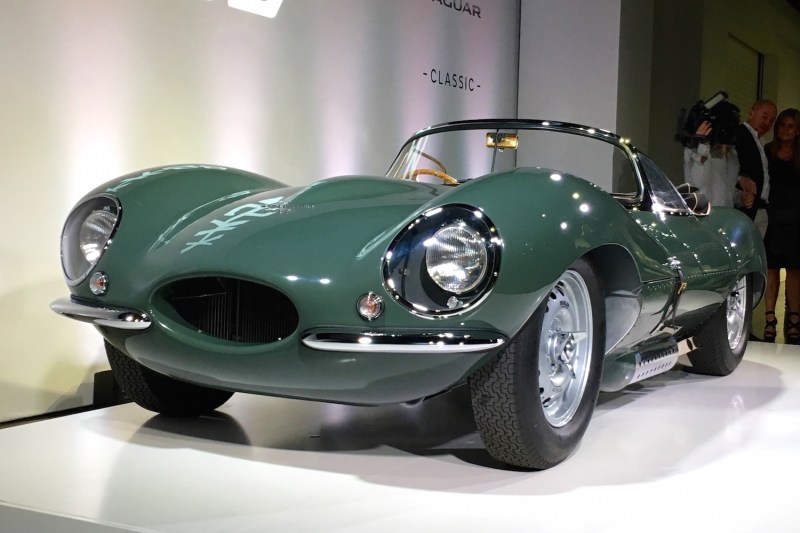In 1957, Jaguar honored the Le Mans-winning D-type with a road-going version, dubbed the Jaguar XKSS. Of the 25 total vehicles produced, nine examples designated for North America were lost in a fire at Jaguar’s factory. At the time, Jaguar didn’t replace the cars, but now, nearly 60 years later, Jaguar Classic is settling up its debt.
Nine Jaguar XKSS sports cars will be produced for a select group of collectors and customers. Each vehicle will use a period-correct chassis and sell for more than 1 million British pounds ($1,241,900 U.S. dollars).
“The XKSS is one of the most important cars in Jaguar’s history, and we are committed to making the ‘new original’ version absolutely faithful to the period car in every way,” said Kev Riches, Jaguar Classic engineering manager.
The body of the XKSS is made from magnesium alloy, as it was in 1957, and Jaguar Classic built a new styling buck to construct each car using the original hand-wheeling process.
To match these cars as closely as possible to the originals, Jaguar Classic combined original drawings and digital imaging techniques. Engineers started with original frames and commissioned Reynolds, a tube frame manufacturer, to produce bespoke parts using imperial measurements. Each frame is bronze welded, just like the ’50s chassis tubing.
Under each hood sits a 3.4-liter straight six-cylinder Jaguar D-type engine making 262 horsepower. The engine is constructed from new cast iron block cylinder heads, and three Weber DC03 carburetors. Period-specific four-wheel Dunlop disc brakes and Dunlop tires on riveted two-piece magnesium alloy wheels are also part of the package.
Inside, the XKSS features re-creations of original Smiths gauges and gorgeous wood. To improve safety, Jaguar Classic used more robust materials on the fuel cell. Jaguar Classics expects each XKSS will require 10,000 man hours of labor to produce.
“Everything is the same as the original cars, because that is the way it should be,” said Riches.
The XKSS is Jaguar Classic’s second continuation car, following the six Lightweight E-types that debuted in 2014. Jaguar Land Rover Classics will move into a new global headquarters costing 7.5 million British pounds in Coventry, England, in 2017, and plans to expand its operations.
“The XKSS continuation program underlines the world-class expertise we have at Jaguar Land Rover Classic,” stated Tim Hannig, director of Jaguar Land Rover Classic. “We are committed to nurturing the passion and enthusiasm for Jaguar’s illustrious past by offering exceptional cars, services, parts, and experiences.”







